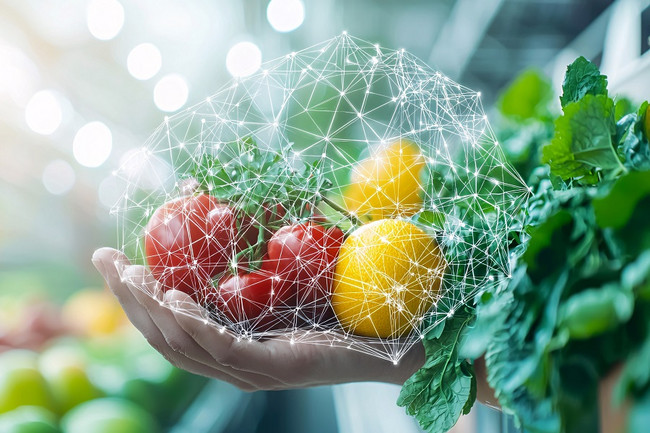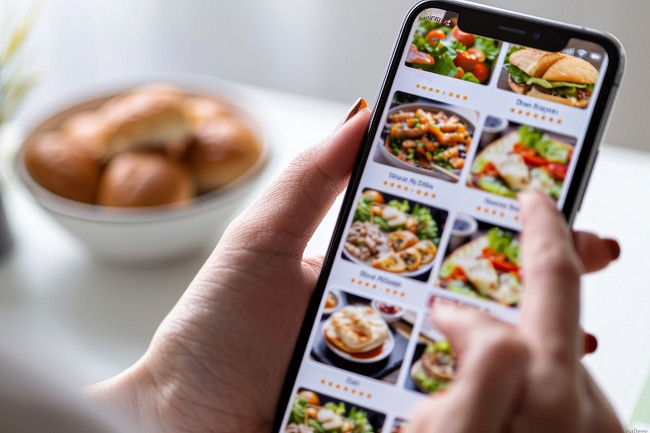✕

Column: industry Tag: blockchain,foodservice Published: 2024-12-26 15:17 Source: www.mashed.com Author: Insha Naureen

Dutch food delivery and takeout platform Bistroo is leveraging blockchain technology to provide restaurants with more control and lower fees (of 5%) compared to traditional platforms which charge up to 30%. The company uses a SaaS infrastructure, offering restaurants white-label websites and instant payouts.
Bistroo recently partnered with the Peaq ecosystem, a Layer 1 blockchain built and optimized for Decentralized Physical Infrastructure Networks (DePINs) and Machine Real World Assets (RWAs) to remove transaction middlemen and provide restaurants with more control over the fee charged, leading to better consumer satisfaction.
Food Ingredients First sits down with Bas Geelen, senior marketer at Bistroo, to understand how blockchain technology can help facilitate “direct relationships” between food merchants and consumers for a sustainable business growth for food delivery platforms.
“Bistro is a SaaS platform for takeaway and delivery. We entered into it because it’s a very centralized market with a few big players like Uber Eats, and here in the Netherlands, takeaway.com. Restaurants get charged very high fees here, which can be upwards of 30%, while the cost basis for restaurants is 78 to 93% of the order value,” says Geelen.
“The math doesn’t really add up there as this leaves them too little space to turn a profit. But restaurants do depend on online orders for a lot of their volume. So they’re stuck in between a rock and a hard place. We’re building a SaaS infrastructure in which restaurants have full control over their orders. They have a white label website that’s completely their own, which gives them back a lot of this control against a lot lower fees,” he explains.
Bistroo provides restaurants with the option for a flat monthly fee or a commission based structure, where they pay a 5% fee per order. The company currently has over 120,000 users in the Netherlands.
Unlocking blockchain potential
The online food delivery market is expected to exhibit a compound annual growth rate (CAGR 2024-2029) of 9.38%, resulting in a projected market volume of US$1.91 trillion by 2029, recent research indicates. In the meal delivery market, the number of users is expected to reach 2.7 billion by 2029.
Amid this surge in restaurant deliveries, Bistroo focuses on both the takeaway and delivery, but purely from an infrastructure standpoint, shares Geelen.
“We want restaurants to not have to rely on big middlemen and have control over what they can do and when they get payouts, when they want to adjust something to their website or their offering on a certain platform. The decentralized nature and autonomy is a huge advantage of blockchain.”
Blockchain also provides transparency, which fits in with Bistroo’s narrative about “being open and giving control back to the restaurant.”
“There are a lot of great partnerships that are possible within this space, faster turnaround when it comes to partners, and often easier integrations. This is also why we teamed up with Peaq, because they are an up and coming ecosystem working on real-world solutions for tangible problems.”
However, Geelen believes there is currently “not too much competition” in blockchain integration in food delivery systems.
“This may be because it’s not that sexy of a sector, like for instance, gaming. But it is a very critical sector. We do see that many third-party services are starting to integrate, or that they have integrated with traditional platforms like Uber Eats, giving their customers the option to pay with crypto. But this is still very limited and there’s still a lot of room for growth for us.”
Meanwhile, the F&B industry is tapping blockchain technology to trace deforestation-free soybeans, bust food fraud and curb child labor by monitoring the risks linked to cocoa and coffee.
Scalability and speed hurdles
Integrating blockchain in the food delivery segment presents its share of scalability and speed challenges, Geelen tells us.
“It is slower than paying with fiat and is also quite complex in certain aspects, especially with our user base, which tends to be a very non-crypto native audience.”
Compatibility issues among different blockchain chains is another hurdle.
To overcome these challenges, Bistroo tries to educate its audience with step-by-step implementation guidance for its users, which is time-consuming, he adds. “But we want to reach a point where it is more convenient and beneficial to pay for your food with BIST, with one or two clicks.”
Bistroo’s technology speeds up response times and gives restaurants and users control and flexibility within the same platform, leading to positive feedback.
“With that also comes instant payouts, because with a lot of the other services, you have a delay period. The end user is the customer of the intermediary platform, not of the restaurant directly. With us, the end user is the customer of the restaurant directly,” underscores Geelen.
Eyeing global expansion

Bistroo is currently reworking its internal reward structures and plans to expand globally, with a pilot in Belgium as its first international endeavor, Geelen shares.
The company is also focusing on integrating with the Peaq network for faster partnerships and easier integrations and recently launched a collaboration with software company XMAQUINA for autonomous delivery and MapMetrics for mapping integration.
“We are also working with Farmsent, which works with farmers, particularly in the Middle East. We want to get the supply from their farmers directly to the restaurants for a full farm-to-table integration approach within the Peaq network,” he concludes.
Previous:UK government announces “ambitious” new national food strategy for 2025
Next:China lifts UK pork import ban, sparking potential £80M industry revenue boost
Hot key words
Hot Products
Popular Vendors